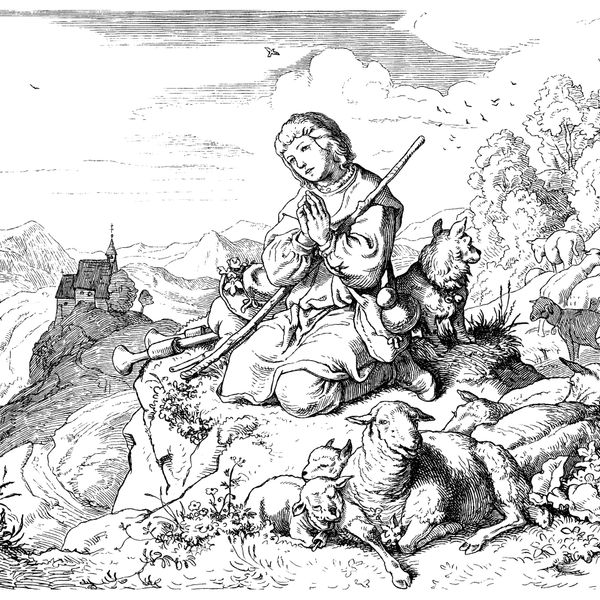St. Patrick

Who Was St. Patrick?
Actually, he was probably the son of a Roman-British aristocrat. We don't have much to go on really, except what Patrick himself wrote in his Confessio, a short biographical piece where he told about his life, and the legends that have grown up around his, some of which are highly improbable, but to get back to Patrick's life.
His name was Succat, and it is said that his father was a Christian deacon, and his grandfather a priest - yes, priests married in those days. He
was probably born around 386 AD on the west coast of Britain, possibly Wales, and though his father was a deacon, the family was not necessarily very religioius.

Now, before I continue with Patrick's life, let's digress for a moment to set the stage for what life was like in Britain at the time. The Roman Empire's hold was declining, and attacks by Irish were quite common, just as the Vikings and Saxons would. The Irish would carry off food, clothing, valuables, and slaves, taking young boys to tend their flocks and women to serve them. Young Sucat was one of the young boys they carried off. He was about 16 years old at the time and captured by a raiding party that belonged to Niall of the Nine Hostages - but we'll discuss Niall another time. At any rate, Succat or Patrick was taken to Ireland, and put to work herding sheep for a wealthy chieftain, either in Antrim or Mayo. No one seems to know for sure, but Patrick had ties to both area, so it could have conceivably been either. Wherever it was, he spent the next six years in captivity in Ireland.

Scared and alone, with no decent clothing, hardly any food, and no company but his sheep, Patrick turned to his religion for solace. After six years, he had a dream that he believed was from God, telling him it was time to leave Ireland. He escaped, walking two hundred miles from the west coast of Ireland to the east coast, where he found a ship heading for the continent, and eventually returned to his family. Some scholars doubt that he would have managed this, and believe he was most likely a slave trader himself, but in my opinion this is just to discredit the man. At any rate, he returned home, and though his parents begged him not to leave again, he couldn't rid himself of a recurring dream - the people of Ireland calling to him, imploring him to return to them.

Once more believing the dream was from God, Patrick studied for the priesthood for the next fifteen years, ultimately being made a bishop. But his dream stayed with him, so he asked the Pope if he could return to Ireland. The Pope agreed, sending him to minister to the Christians already in Ireland, and to work to convert those who were not. Thus debunking myth number one. Patrick was not the first Christian missionary to Ireland. There were already Christian communities forming, though the majority of the Ireland
still remained pagan. And so it was that he
spent the rest of his life in Ireland, most likely dying on March 17, 461 AD

St. Patrick
Just a note on myth number 2. St. Patrick did not drive the snakes out of Ireland. In fact, the waters around Ireland are so cold that it never had any snakes to begin with. That story probably was created by Christian writers to symbolize that he drove paganism from Ireland. He did convert many of the pagan chiefs and druids, along with a great deal of the populace. Another story tells of his use of the shamrock to teach about the trinity. Most likely he did use some form of clover to get this point across though there really is no such thing as a shamrock. As far as burning books, I think that highly unlikely. Patrick incorporated pagan beliefs into Christianity rather than doing away with them. He encouraged bonfires at Easter, in place
of Beltane, and even added the circular
symbol of the sun god to the cross to make
it more familiar to the people. Today we
know it as the Celtic cross.
Cookie Policy
This website uses cookies. By continuing to use this site, you accept our use of cookies.